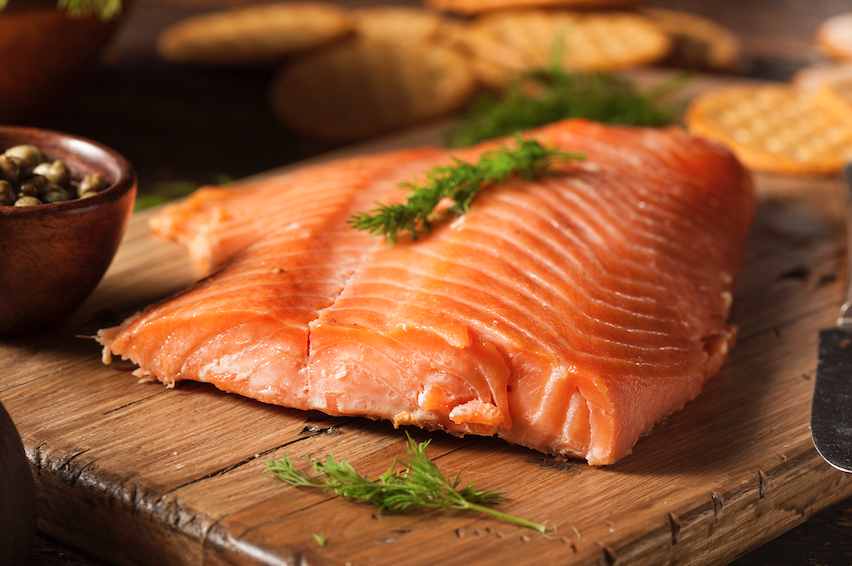Sports Medicine


The Best Foods To Reduce Inflammation In Your Joints
Weight training can be hard on your joints, but if you have the proper nutrients from food to help reduce the inflammation, you can sustain healthy joints for a lifetime. Here are a few things to consider.
Omega-3 to Omega-6 Fatty Acid Ratio Problem
It has been suggested that human beings evolved on a diet with a ratio of omega-6 to omega-3 essential fatty acids (EFA) of approximately 1:1. Western diets nowadays are usually quite deficient in omega-3 fatty acids and can have excessive amounts of omega-6 fatty acids. Excessive amounts of omega-6 fatty acids and a very high omega-6 to omega-3 ratio (15:1), as is found in today’s Western diets, can promote the pathogenesis of many diseases, including cardiovascular disease, cancer, and inflammatory and autoimmune diseases. Conversely, increased levels of omega-3 fatty acids and a low omega-6/omega-3 ratio (1:1), can exert an anti-inflammatory effect.
Tips to reduce inflammation in the joints:
1. Increase Omega-3 Oils In Your Diet
 One of the best foods to reduce inflammation in the body is omega-3 oils, which are usually consumed through fish, especially salmon. But not all salmon are the same. A piece of farmed salmon today may contain as little as half the amount of omega-3s than it did a decade ago. This is according to the International Fishmeal and Fish Oil Organization (IFFO), a trade group that represents stakeholders in the marine ingredient industry. The group is sounding the alarm over declining levels of omega-3s in farmed salmon. “A 2008 paper showed that for every 3.5 ounces of farmed salmon you ate, you would get about 2 to 2.5 grams of EPA [eicosapentaenoic acid] and DHA [docosahexaenoic acid], and that was down from 3 grams three years earlier. Since 2008, it has come down further,” says Andrew Jackson, technical director at IFFO. “You’re probably only going to get 1.5 grams per serving now.” Here’s where it gets interesting. Farmed salmon has three times the total fat of wild salmon, but a large part of these fats are omega-6 fatty acids, which can contribute to inflammation in the body, especially the joints. Also, farmed salmon contain high concentrations of organochlorine compounds such as PCBs, dioxins, and chlorinated pesticides. The presence of these contaminants may reduce the net health benefits derived from the consumption of farmed salmon, despite the presence of omega-3 fatty acids in these fish. Bottom line: If you can eat wild salmon, it’s worth the cost.
One of the best foods to reduce inflammation in the body is omega-3 oils, which are usually consumed through fish, especially salmon. But not all salmon are the same. A piece of farmed salmon today may contain as little as half the amount of omega-3s than it did a decade ago. This is according to the International Fishmeal and Fish Oil Organization (IFFO), a trade group that represents stakeholders in the marine ingredient industry. The group is sounding the alarm over declining levels of omega-3s in farmed salmon. “A 2008 paper showed that for every 3.5 ounces of farmed salmon you ate, you would get about 2 to 2.5 grams of EPA [eicosapentaenoic acid] and DHA [docosahexaenoic acid], and that was down from 3 grams three years earlier. Since 2008, it has come down further,” says Andrew Jackson, technical director at IFFO. “You’re probably only going to get 1.5 grams per serving now.” Here’s where it gets interesting. Farmed salmon has three times the total fat of wild salmon, but a large part of these fats are omega-6 fatty acids, which can contribute to inflammation in the body, especially the joints. Also, farmed salmon contain high concentrations of organochlorine compounds such as PCBs, dioxins, and chlorinated pesticides. The presence of these contaminants may reduce the net health benefits derived from the consumption of farmed salmon, despite the presence of omega-3 fatty acids in these fish. Bottom line: If you can eat wild salmon, it’s worth the cost.
2. Rebalance Your Omega-6 To Omega-3 Ratio
 The first thing to do is get rid of omega-6 trans fats in your diet such as margarine. Read food labels. Second, eliminate potentially pro-inflammatory foods and oils such as corn, safflower, peanut, and sesame which are high in omega-6 fatty acids. Third, eat more wild meats such as bison, elk, or ostrich. Also eat grass-fed beef, as there are higher levels of omega-3 in the meat due to the chloroplasts in green tall grass. Fourth, eat omega-3-rich eggs. Many companies now focus on increasing the amount of omega-3 fatty acids in eggs. Fifth, eat green vegetables, such as kale and spinach. Also certain beans such as kidney and navy can be helpful. Sixth, add flaxseeds to your diet. Just remember to grind them up before eating and spread them into your drink or food as the flax shell is difficult to break down and you won’t get the full amount of omega-3s stored. Lastly, eat cold-water fish such as wild salmon, herring, and arctic char.
The first thing to do is get rid of omega-6 trans fats in your diet such as margarine. Read food labels. Second, eliminate potentially pro-inflammatory foods and oils such as corn, safflower, peanut, and sesame which are high in omega-6 fatty acids. Third, eat more wild meats such as bison, elk, or ostrich. Also eat grass-fed beef, as there are higher levels of omega-3 in the meat due to the chloroplasts in green tall grass. Fourth, eat omega-3-rich eggs. Many companies now focus on increasing the amount of omega-3 fatty acids in eggs. Fifth, eat green vegetables, such as kale and spinach. Also certain beans such as kidney and navy can be helpful. Sixth, add flaxseeds to your diet. Just remember to grind them up before eating and spread them into your drink or food as the flax shell is difficult to break down and you won’t get the full amount of omega-3s stored. Lastly, eat cold-water fish such as wild salmon, herring, and arctic char.
Small changes in your food choices can make a big impact on the inflammation in your body and joints. Make the right choice.
To learn more about how Omega fatty acids work, and the role of inflammation in the body, click here!

